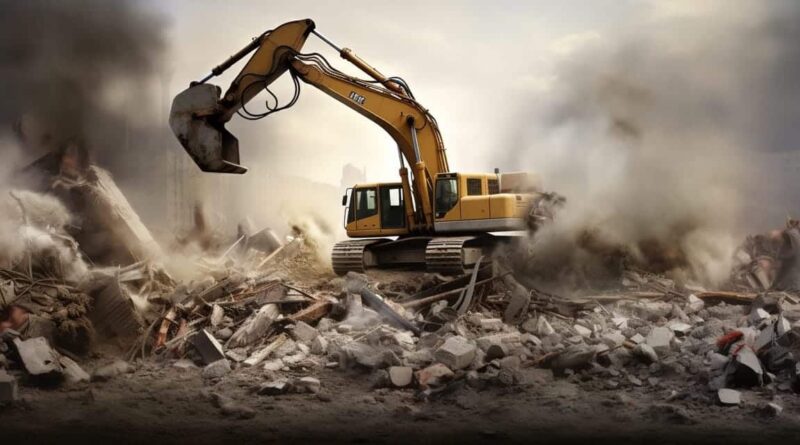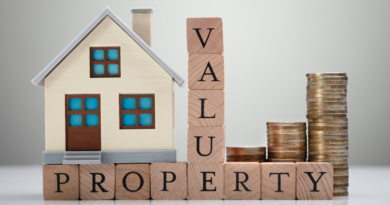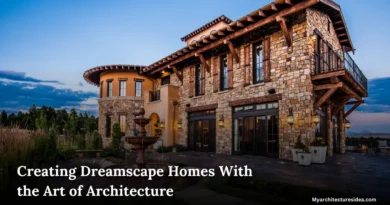Sustainable Building Practices in Orlando: Reducing Construction Waste
In the vibrant city of Orlando, known for its bustling tourism and expanding urban landscape, sustainable building practices are not just a trend but a necessity. As the city grows, so does the imperative to adopt environmentally responsible construction methodologies that mitigate waste and promote ecological balance.
This focus on sustainability is critical in managing the by-products of construction and renovation projects, which are substantial contributors to landfill waste. As we delve deeper into sustainable architecture in Orlando, we invite you to dive into Orlando’s green waste management practices, an essential component of sustainable urban development.
Adopting Ecological Materials & Processes with Improved Technology
Material selection from ecological architecture was a fundamental element. Before, environmental awareness was not the primary concern among the designers and architects of Orlando. Still, nowadays, they design and construct using materials derived from eco-friendly sources or recycled products. This encompasses wood that has been reclaimed, steel of a recovered nature, and recycled glass along with paints and adhesives that are low-VOC, which is beneficial to indoor air quality and helps in providing a more toxic environment. These choices not only lessen the ecological footprint of construction but also allow well-designed living spaces to be created to make them one of the top priorities of a modern architectural ethos.
In addition, choosing sustainable materials is not just aimed at environmental benefits but also due to the economic perks of the practice. Such materials as recycled glass and wood, which have frequently been less costly for builders to acquire than the standard manufactured materials, often serve as excellent means of reducing building costs while not losing quality.
Because of this, green buildings are becoming more widespread, and revenue generation is increasing as more builders think of sustainable ways to use recycled and reclaimed materials. Consequently, these material demands create extra business opportunities and are forerunners of the emerging circular economy to which local businesses can contribute.
The technical part contains the details of waste reduction as well. The embedded software now helps architects preview the building performance before starting the genuine construction. This proactive design path lets us change and eliminate those unfit parts to achieve optimum energy performance and reduce waste. Processes like accurate material computations and virtual reality walkthroughs help to detect material oversupply and design inefficiencies that eventually might be the source of waste.
Integrating Waste Management Solutions from the Ground Up
Responsible waste management for a new building commences with the project planning phase. Implementing zero-waste strategies into buildings’ fundamental plan and functioning is the prerogative of architects, developers, and construction firms. Orlando is lucky regarding waste management with projects that highlight the possibility of integrating intelligent solutions of solid waste management with an aesthetically pleasing, contemporary design.
Furthermore, dismantling for demolition can be a decisive principle. The latter technique involves deliberately designing buildings so they can be dissembled and their reuse is possible before disposing of them in a landfill. On the other hand, the city’s architects are now deploying modular construction methods. This not only limits the substance needed for construction but also cuts down on construction time by half. These modules can be constructed and insulated before transporting them to the site. This process results in a dramatic reduction in on-site waste generation and the total carbon footprint.
The next aspect that should be looked into is the on-site waste sorting stations, which are fundamental for properly and safely recycling materials. This reduces the amount of rubbish sent to landfills and provides alternatives to disposal that support the local economy with materials converted into new products. Future-looking companies in the city of Orlando are partnering with sustainable waste removal services providers that insist on following Florida’s strict recycling and waste management laws.
Conclusion
Orlando is always at a crossroads of modern architecture and the preservation of nature. Moreover, the city’s dedication to reducing construction waste through green construction practices represents more than a sensitive requirement; it becomes a firm commitment that includes the quality of life of the city and the preservation of natural resources for future generations. Architects and builders in Orlando are not just building high-rises; they are scaffolding the future of city living, which is beautiful, developed, and devised to be long-term.
The green industry also uses green materials, waste management systems, and technology. These are not just passing trends but innovation benchmarks in Orlando. As the city expands, the people of these cities can then be used as a blueprint for other cities around the world, indicating that growth and sustainability are coupled by nature.




